Body length: 3–15 mm.
Eyes: eye interommatidial setaeseta:
a sclerotized hair-like projection of the cuticle
absent, eye deeply emarginateemarginate:
notched at the margin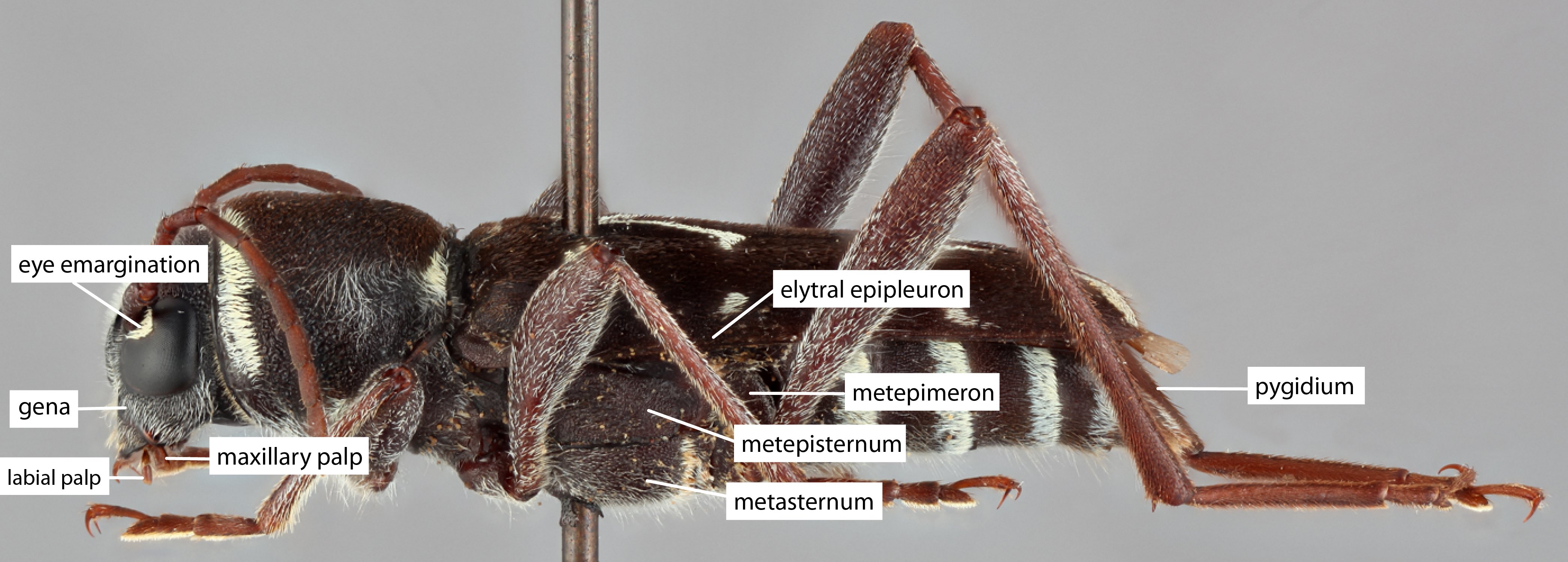 > half width, eye ommatidial density coarse.
> half width, eye ommatidial density coarse.
Antennaeantenna:
in larval and adult insects, paired segmented appendages, borne one on each side of the head, functioning as sense organs and bearing a large number of sensilla
: antennal length reaches between basebase:
the part of any appendage or structure that is nearest the body
and end of elytraelytron:
the leathery forewing of beetles, serving as a covering for the hind wings, commonly meeting opposite elytron in a straight line down the middle of the dorsum in repose
or reaching/surpassing end of body, antennal flagellar segments elongateelongate:
much longer than wide
, scapescape:
the first proximal segment of the antenna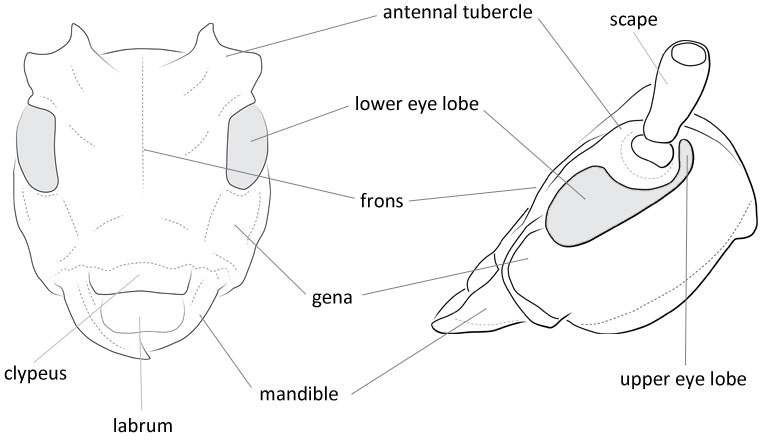 smooth/punctate at apexapex:
smooth/punctate at apexapex:
end of any structure distad to the base
, antennal scapescape:
the first proximal segment of the antenna ≥ segment 3.
≥ segment 3.
Pronotumpronotum:
the upper and dorsal part of the prothorax
: pronotumpronotum:
the upper and dorsal part of the prothorax
shape transversetransverse:
broader than long
, pronotumpronotum:
the upper and dorsal part of the prothorax
lateral armature absent.
Prosternum: prosternal processprosternal process:
a posterior extension of the prosternum between the coxae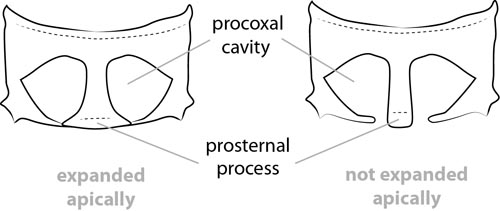 dilated at apexapex:
dilated at apexapex:
end of any structure distad to the base
, procoxal cavities closed posteriorly.
Elytraelytron:
the leathery forewing of beetles, serving as a covering for the hind wings, commonly meeting opposite elytron in a straight line down the middle of the dorsum in repose
: elytral length reaching or close to end of abdomen, elytral apicesapex:
end of any structure distad to the base
rounded or truncatetruncate:
cut off squarely at the tip
, elytral color black, brown, yellow, reddish, or orange, elytral color pattern present or absent.
Legs: visible tarsomerestarsomere:
subdivision or article of the tarsus, usually numbering from two to five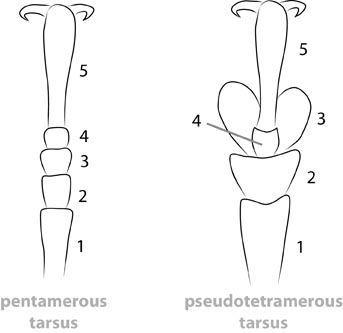 : 4, femora clavateclavate:
: 4, femora clavateclavate:
thickening gradually toward the tip
or robust, protibial spursprotibial spur:
sclerotized spine(s) located at the distal tibia; can be single, double, or absent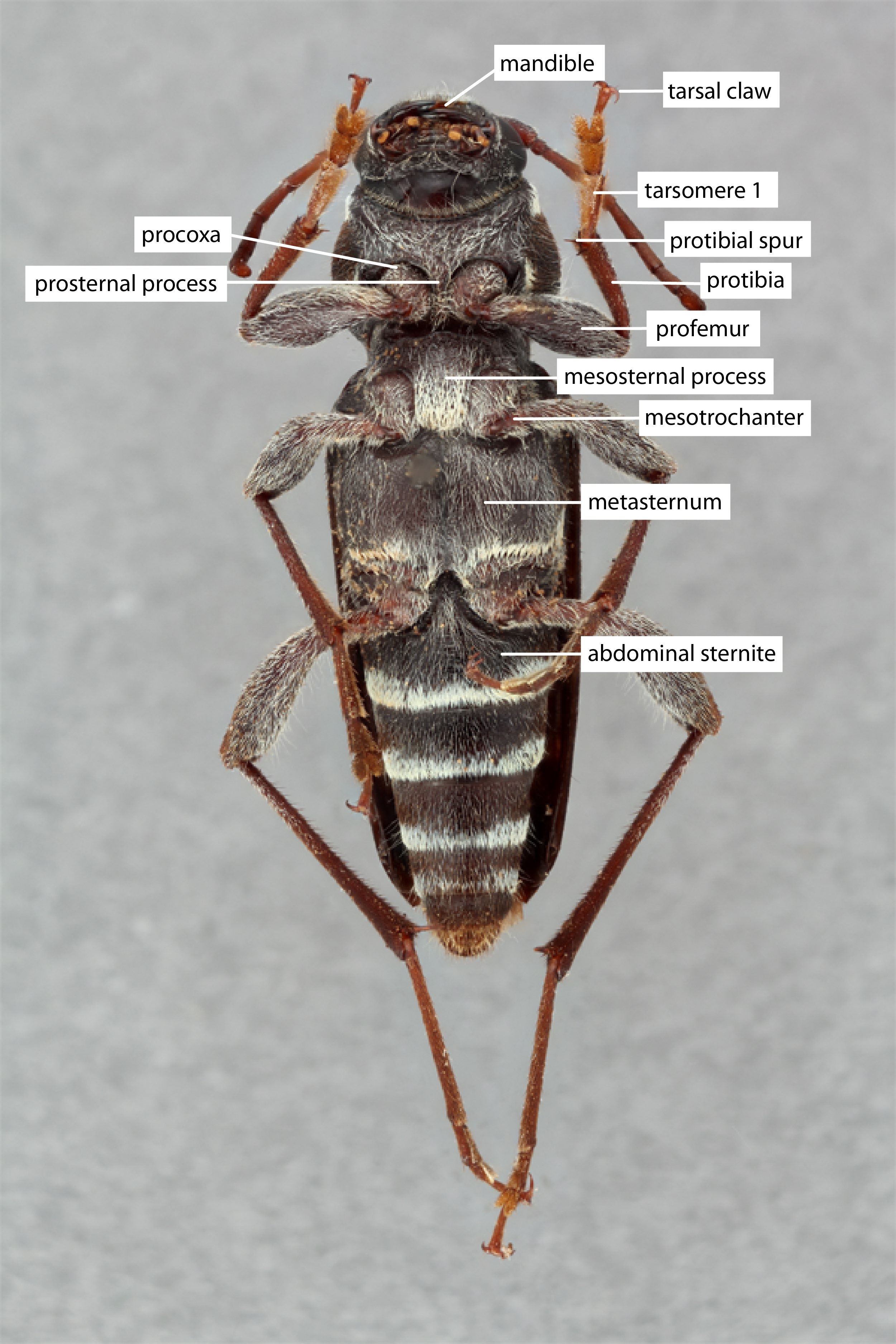 : 2, tarsal clawstarsal claw:
: 2, tarsal clawstarsal claw:
usually paired claws of the pretarsus, at the distal end of the leg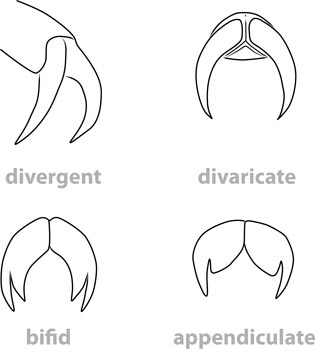 simple.
simple.
Elongated to very elongated oval. Antennaeantenna:
in larval and adult insects, paired segmented appendages, borne one on each side of the head, functioning as sense organs and bearing a large number of sensilla
fairly thick, fringed below with long hairs; the scapescape:
the first proximal segment of the antenna thick and not long, almost always punctatepunctate:
thick and not long, almost always punctatepunctate:
set with fine, impressed points or punctures appearing as pin-pricks
, the third article a little longer to a little shorter than the fourth, as long as the scapescape:
the first proximal segment of the antenna or shorter. Antennaeantenna:
or shorter. Antennaeantenna:
in larval and adult insects, paired segmented appendages, borne one on each side of the head, functioning as sense organs and bearing a large number of sensilla
tubercles distant, barely prominent. Eyes coarsely faceted and strongly indented, the lower lobes almost always very large, the upper lobes often very close together on the vertexvertex:
the top of the head between the eyes, frons and occiput, anterior to the occipital suture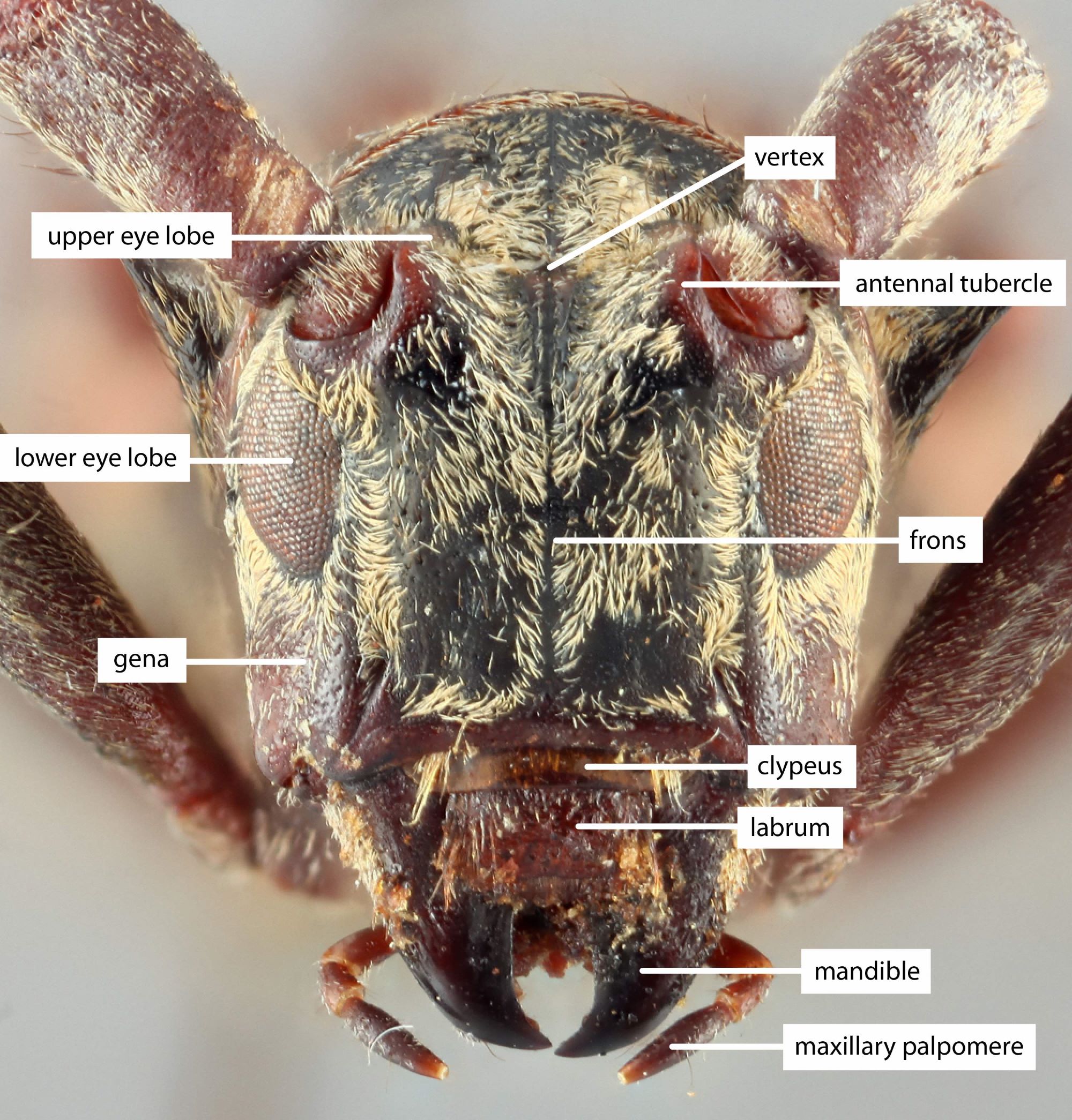 . Most often transversetransverse:
. Most often transversetransverse:
broader than long
pronotum, with rounded lateral edges. Elytraelytron:
the leathery forewing of beetles, serving as a covering for the hind wings, commonly meeting opposite elytron in a straight line down the middle of the dorsum in repose
more or less elongated, convex, retractile head. Prosternal projection less high than the hips, narrow and arched. Mesosternal projection slightly inclined forwards. Metasternum of normal length. Intermediate coxal cavities open. Legs not long and robust; the claviform femurs, the intermediate tibiaetibia:
the leg segment distal to the femur, proximal to the tarsus
provided with a light dorsal projection. Whole body, legs, and antennaeantenna:
in larval and adult insects, paired segmented appendages, borne one on each side of the head, functioning as sense organs and bearing a large number of sensilla
furnished with long erect hairs (Breuning 1959Breuning 1959:
Breuning S. 1959. Révision des Acanthocini de l'Afrique noire (Troisième partie). Bulletin de l'Institut Français d'Afrique Noire, Dakar, 21, série A (2): 607–652, fig. 20.).
Trichosophroniella, Tetrops
The stout cylindricalcylindrical:
shaped like a cylinder, parallel sided
form, long erect setaeseta:
a sclerotized hair-like projection of the cuticle
all over, eyes almost touching on the vertexvertex:
the top of the head between the eyes, frons and occiput, anterior to the occipital suture , lack of setal clumps on the pronotumpronotum:
, lack of setal clumps on the pronotumpronotum:
the upper and dorsal part of the prothorax
, and a setal brush on the mesotibia distinguish this genus.
Palearctic, Afrotropical, Indomalaya
broadleaf trees
262 species and sspp. Key to many African species in Breuning 1959Breuning 1959:
Breuning S. 1959. Révision des Acanthocini de l'Afrique noire (Troisième partie). Bulletin de l'Institut Français d'Afrique Noire, Dakar, 21, série A (2): 607–652, fig. 20..
Sophronica Dejean, 1837
Psida Gistel, 1848
Dasyo Pascoe, 1858
Elithiotes Pascoe, 1864
Lasiapheles Bates, 1873
Dasystola Kolbe, 1894
Phunginus Pic, 1922
Mimanaesthetis Pic, 1926
Eupogonioides Fisher, 1930
Sophronica (Dimbrokoa) Pic, 1944
Sophronica Blanchard, 1845